Scottish Food: Basic Overview
Common Ingredients
Common Cooking Methods
Courses
Meals
Key Taste
Eating Etiquette
Meal Presentation
Culinary Festivals
Influence and Fusion
Popular Types of Scottish Food
-
Cakes and pastries
Scottish cakes and pastries exhibit a rich diversity, often characterized by their hearty textures and deep flavors.
Predominantly sweet, they range from the crumbly, butter-rich shortbread to the dense, fruit-laden Dundee Cake.
These treats reflect Scotland’s agricultural heritage, with ingredients like oats and barley frequently used.
Many are rooted in tradition, served during celebrations and holidays.
-
Desserts
Scottish desserts are a testament to the country’s love for rich, comforting flavors.
From the creamy, whisky-laced cranachan, to the indulgent sticky toffee pudding with its moist sponge, these desserts are often served at gatherings and special occasions.
-
Soups
The soups of Scotland stand out for their robust and comforting nature, often featuring local ingredients like root vegetables, pulses, and meats.
Scotch broth and Cullen skink are prime examples, offering hearty nourishment and a taste of Scottish tradition.
These soups are versatile, enjoyed across the country from home kitchens to pubs.
-
Fried dishes
In Scottish cuisine, fried dishes hold a special place, epitomized by the iconic deep-fried Mars Bars and fish and chips.
These dishes represent Scotland’s penchant for indulgent, comforting foods, often associated with takeaway culture.
-
Bread and doughs
Scottish bread and doughs are staples in the diet, reflecting the country’s agrarian roots and the versatility of oats and barley.
From the hearty oatcakes, serving as a nutritious accompaniment to meals, to the soft, pancake-like Tattie Scones, these items are integral to Scottish meals
-
Boiled dishes
Boiled dishes in Scottish cuisine, such as the traditional Haggis and the comforting clootie dumpling.
These dishes are deeply embedded in Scotland’s cultural traditions, often served during celebrations like Burns Night.
Scottish dishes are culinary creations typically enjoyed in Scotland, a country located in the northern part of the island of Great Britain. As a distinctive part of British cuisine, Scottish dishes are known for their use of local ingredients, traditional recipes, and hearty meals.
Traditional Scottish dishes often feature meat, particularly beef and lamb, seafood, including salmon and haddock, root vegetables, and oats, as staples. These delicacies have a noticeable effect on English dishes and various food offerings in Britain.
Cooking methods vary, including boiling and stewing for soups and stews. The culinary traditions of Scotland also extend to baking, showcasing a variety of breads, scones, and cakes.
Apart from Scotland’s famous dishes, I also explore the unique traits of traditional Scottish cuisine, its global appeal, and what makes its food healthy. Plus, you’ll get a peek into Scottish culinary history, dining etiquette, and food and drink pairing tips.
Time to kick things off!
39 Popular Scottish Dishes with Filters
Explore the 39 most popular Scottish dishes, arranged by popularity! This easy-to-use guide lets you quickly find what you’re craving by filtering through ingredients, taste, cooking methods, dish types, courses, and global recognition.
Plus, dive into a variety of culinary styles, from national and traditional to street eats and innovative fusions.
Scottish fusion dishes blend traditional Scottish elements with influences from other cuisines, creating innovative and exciting flavors.
Fish And Chips
- Street Food
- Traditional
Fish and Chips, also known as a Fish supper in Scotland, is a traditional British dish that has become a beloved part of Scottish cuisine. This dish consists of battered and fried fish, typically cod or haddock, accompanied by deep-fried potato chips.
It is a staple food enjoyed by many, especially on Friday nights or as a comforting meal during the week. In Scotland, Fish and Chips is often consumed in a casual setting, either at a local “chippy” (fish and chip shop) or as a takeaway meal to be enjoyed at home or outdoors.
Haggis
- National
- Street Food
- Traditional
Haggis is a traditional Scottish dish, recognized as the national dish of Scotland, and is a savory pudding that contains sheep’s pluck (heart, liver, and lungs), minced with onion, oatmeal, suet, spices, and salt, mixed with stock.
It is traditionally encased in the animal’s stomach, though nowadays, an artificial casing is often used. Haggis is believed to have been consumed since ancient times, and it became particularly famous after being celebrated in Robert Burns’ poem “Address to a Haggis” in 1786.
This dish is traditionally served with “neeps and tatties” (boiled and mashed separately turnips and potatoes) and a dram of Scotch whisky, especially during Burns supper, which is held on or near January 25 to celebrate Scotland’s national poet, Robert Burns.
Despite its specific ingredients, haggis has inspired various fusion dishes, such as haggis pakora, showcasing its versatility in modern Scottish cuisine.
Scottish Salmon
- Traditional
Scottish Salmon refers to salmon that is farmed or caught in Scotland’s clean, cold waters, known for its high quality and rich taste. Scottish salmon is a traditional food product, often considered a delicacy and a significant part of Scotland’s culinary heritage.
It is celebrated for its versatility in dishes, from smoked salmon served with cream cheese on bagels to being a key ingredient in sophisticated culinary creations.
The farming of Atlantic salmon (Salmo salar) in Scotland is a major industry, with techniques developed for sustainable aquaculture. Scottish Salmon is not only a staple in Scottish cuisine but also a prized export, recognized globally for its superior quality and taste.
Shortbread
- Traditional
Shortbread, also known as shortie, is a traditional Scottish biscuit recognized for its crumbly texture, which is a result of its high butter content.
Shortbread is made from a simple recipe of one part white sugar, two parts butter, and three to four parts plain wheat flour, without any leavening agents like baking powder or baking soda
Its refinement is popularly credited to Mary, Queen of Scots in the 16th century, though evidence for this connection is sparse. A famous variation is the “petticoat tails,” which are triangular wedges of shortbread that have become particularly associated with Mary, Queen of Scots.
Shortbread was traditionally a luxury item reserved for special occasions such as weddings, Christmas, and Hogmanay.
Scotch Eggs
- Street Food
- Traditional
Scotch eggs are a traditional picnic food from the United Kingdom, consisting of a boiled egg wrapped in sausage meat, coated in breadcrumbs, and then baked or deep-fried. This dish has various origin stories, with one suggesting its inspiration is possibly Indian koftas.
Scotch Eggs are a popular choice for cold snacks at picnics and are often enjoyed in pubs across Scotland. They have variations like the Manchester egg, which includes a pickled egg wrapped in a mixture of pork meat and Lancashire black pudding.
In the Netherlands and Belgium, they are sometimes referred to as “vogelnestje” (little bird’s nest) or “eierbal” (eggball), highlighting the dish’s wide appeal and adaptability.
Full Scottish Breakfast
- Traditional
Full Scottish Breakfast is a substantial cooked meal that is a traditional part of Scottish cuisine, often enjoyed as a hearty start to the day.
This breakfast is known for its variety and abundance, typically including bacon, sausages, eggs, black pudding, baked beans, tomatoes, mushrooms, and toast, with coffee or tea as common beverages.
The Full Scottish Breakfast is a celebration of local produce and traditional cooking methods, often served not just as a daily meal but as a special occasion or weekend treat. It remains a popular choice in cafes and pubs, sometimes available as an “all-day breakfast.”
Deep-fried Mars Bars
- Street Food
Deep-fried Mars bars are a unique Scottish invention, consisting of a Mars chocolate bar enveloped in batter and then deep-fried until golden.
Originating as a novelty item in a Scottish chip shop, this indulgence has gained fame and notoriety as a symbol of Scotland’s love for deep-fried foods. While initially met with mixed reactions, its popularity has soared, leading to the creation of other deep-fried confections.
Chicken Tikka Masala
- Fusion
Chicken tikka masala stands as a quintessential British culinary invention with South Asian influences, likely hailing from Glasgow, Scotland. This dish features succulent pieces of marinated chicken (known as chicken tikka), bathed in a vibrant, spiced, and creamy sauce.
The unique sauce is a blend of tomatoes, cream, coconut cream, and a variety of spices, ensuring each recipe brings its own distinct flavor. Emblematic of the fusion between Indian and British cooking traditions, it was brought to prominence by Indian chefs in Great Britain.
Globally cherished, chicken tikka masala is a warm, inviting staple in Scottish cuisine, frequently found in restaurants around the world.
Scottish Porridge
- Traditional
Scottish porridge is a traditional Scottish dish made from oats that are boiled in water or milk. It is a staple breakfast food, often served with salt, sugar, fruit, or cream.
Porridge holds a special place in Scottish culinary tradition due to the country’s suitable climate for oat cultivation, making oats a staple grain.
It has a long history in Scotland, reflecting the country’s agricultural practices and dietary preferences.
Sticky Toffee Pudding
- Traditional
Sticky toffee pudding is a traditional British dessert, popular in Scotland, consisting of a moist sponge cake made with finely chopped dates, covered in a rich toffee sauce. It is often served with vanilla custard or ice cream.
This dish is a classic example of British cuisine and has various versions, including some that use different types of sugar or add nuts and spices for flavor.
The origins of Sticky Toffee Pudding are disputed, with claims of its invention dating back to the early 20th century in different locations within the UK.
It gained widespread popularity in the 1970s and is now a beloved treat in the UK, available in many restaurants and supermarkets as a ready-to-bake dessert.
Black Pudding
- Street Food
- Traditional
Black pudding, also known as marag dhubh in Scottish Gaelic, putóg dhubh in Irish, and other names in Welsh, is a traditional type of blood sausage originating from Great Britain and Ireland. It is made primarily from pork blood, fat, and oatmeal or barley.
Black pudding is a key component of the traditional full breakfast and has been granted Protected Geographical Indicator of Origin status in some regions, such as Stornoway black pudding.
It can be served in various ways, including grilled, fried, baked, or boiled. Variations like the Sneem Black Pudding from County Kerry have also gained recognition for their unique regional flavors.
Neeps And Tatties
- Traditional
Neeps and Tatties, also known as turnips and potatoes, are traditional Scottish side dishes often served alongside haggis. Neeps refer to the root vegetable rutabaga in North America, known as swede or Swedish turnip in other parts of the world, including Scotland.
Tatties are simply potatoes. This combination is a staple of Scottish cuisine, particularly noted for its association with Burns supper, a celebration of the Scottish poet Robert Burns.
Neeps and tatties highlight the simplicity and heartiness of Scottish culinary traditions, focusing on locally available ingredients. While primarily served with haggis, they can also accompany other dishes.
Cullen Skink
- Traditional
Cullen skink, originating from the town of Cullen in Moray, is a thick Scottish soup made from smoked haddock, potatoes, and onions. Utilizing finnan haddie for an authentic flavor, this soup is a cherished specialty of northeastern Scotland.
It can be enjoyed as a starter at formal dinners or as a comforting everyday meal. Traditionally served with bread, Cullen skink is recognized for its smoky depth.
It has become a symbol of Scottish culinary tradition, often featured in cookbooks and menus across Scotland and beyond.
Scotch Broth
- Traditional
Scotch broth is a traditional Scottish soup known for its hearty blend of barley, lamb, or beef, and root vegetables like carrots and turnips. This warming dish is often enriched with pulses such as split peas and lentils, making it a staple of Scottish cuisine.
Scotch broth is celebrated for its versatility and has been a beloved comfort food in Scotland for generations, available both in homemade and ready-prepared forms.
Scotch Pies
- Street Food
- Traditional
Scotch pies, also known as mutton pies, shell pies, or football pies, are traditional Scottish small, double-crust meat pies filled with minced mutton, although beef and sometimes lamb are now commonly used.
Originating in Scotland, Scotch pies have become a staple at football grounds, often served with Bovril, and are known for their hard crust that allows them to be eaten by hand without wrapping.
The pie is characterized by its hot water crust pastry, which encases the highly spiced meat filling. Scotch pies are often associated with outdoor events and takeaway food culture.
Tablet
- Traditional
Tablet is a traditional Scottish confectionery that is somewhat akin to fudge but with a more brittle, grainy texture. This sweet treat is made primarily from sugar, condensed milk, and butter, often flavored with vanilla or whisky.
Tablet has a long history in Scotland and is a popular homemade sweet, especially around Christmas and other celebrations. It’s known for its rich, sweet flavor and distinctive crumbly texture, which sets it apart from the smoother fudge found elsewhere.
Cranachan
- Traditional
Cranachan, traditionally known as a celebration of harvest, is a classic Scottish dessert that combines the flavors of whipped cream, whisky, honey (preferably heather honey), fresh raspberries, and toasted oatmeal.
Originally made to celebrate the raspberry harvest in June, this dessert is deeply rooted in Scottish culinary traditions, showcasing local ingredients.
Cranachan has evolved from its simpler origins to become a sophisticated dessert, often served at special occasions throughout the year. Nowadays, there are modern adaptations like orange cranachan, cranachan trifle, and even chocolate cranachan.
Dundee Cake
- Traditional
Dundee cake is a traditional Scottish fruit cake known for its rich blend of ingredients including currants, sultanas, almonds, and often a distinctive marmalade flavor.
Originating from Dundee, Scotland, this cake is recognized for its decoration of concentric circles of blanched almonds on top. It has historical ties, with some accounts suggesting it was first made for Mary, Queen of Scots, in the 16th century.
The cake is associated with tea time and has been favored by notable figures, including Queen Elizabeth II. Dundee Cake is a celebrated part of Scottish cuisine, reflecting the country’s culinary traditions and history.
Oatcakes
- Traditional
Oatcakes are a versatile component of Scottish cuisine, serving as a traditional food. Made primarily from oats, oatcakes are a type of flatbread or cracker that can be either baked or cooked on a griddle.
Their history in Scotland dates back to at least the Roman conquest of Britain, indicating their long-standing presence in Scottish diets. Oatcakes have been a staple food, reflecting the adaptability of oats as a crop in Scotland’s climate.
They can vary in texture from rough to fine, depending on the grinding of the oats, and can be enjoyed with meals throughout the day.
Oatcakes are celebrated for their simplicity and nutritional value, often accompanying soups, meats, and fish, or served as an alternative to bread or toast at breakfast.
Stovies
- Traditional
Stovies are a traditional Scottish dish made primarily from potatoes. The essence of stovies lies in the method of cooking, which involves slow stewing in a pot to create a hearty and comforting meal.
This dish is versatile, with recipes varying widely across different regions and households. Some common variations include the addition of other vegetables or the choice of fat used in cooking, such as lard, beef dripping, or butter.
Stovies can be enjoyed with cold meat, oatcakes, or pickled beetroot, showcasing its adaptability to different tastes and preferences.
The term “stovies” comes from the Scots word “to stove,” meaning “to stew,” reflecting its cooking technique and the cultural significance of stewing in Scottish cuisine
Cock-A-Leekie Soup
- National
- Traditional
Cock-A-Leekie soup, recognized as Scotland’s National Soup, is a comforting and traditional Scottish soup that combines leeks and peppered chicken stock. It may be thickened with rice, barley, or sometimes oatmeal, and is known for its simple yet rich flavors.
The soup can possibly be traced back to a French chicken and onion soup, which evolved into the Scottish version by replacing onions with leeks.
The inclusion of prunes in the cooking process or as a garnish is a traditional touch that adds a unique flavor profile to the soup. Additionally, Cock-A-Leekie Soup is a staple at Burns’ Suppers.
Arbroath Smokies
- Traditional
Arbroath smokies are a traditional Scottish delicacy made from haddock that is first salted and then smoked over hardwood. Originating from the town of Arbroath in Angus, Scotland, this dish is recognized for its unique preparation method that dates back to the late 1800s.
The smokies are known for their strong, smoky flavor and are often enjoyed as a key component of various meals. In 2004, the European Commission granted Arbroath Smokies Protected Geographical Indication status.
They are celebrated for their traditional smoking process, which involves drying the fish overnight, tying them in pairs, and then smoking them over a special barrel containing a hardwood fire.
Bannock
- Street Food
- Traditional
Bannock, a type of flatbread or quick bread, is a traditional food common in Scotland and other areas of the British Isles. Made primarily from flour, bannocks are typically round and are often cut into sections before serving.
The term “bannock” comes from northern English and Scots dialects, with historical roots in both Ireland and Scotland. Bannocks are traditionally dense, flat oatmeal or barley cakes, griddle or stone-cooked.
Bannocks play a role in various cultural rituals and festivals, particularly in Gaelic traditions, marking the changing of seasons with specific bannocks for festivals like St. Bride’s Day, Bealtaine, Lughnasadh (Lammas), and Samhain.
The Selkirk Bannock, a well-known variety from Scotland, is a spongy, buttery bread containing a large amount of raisins, highlighting the diversity within bannock recipes.
Clapshot
- Traditional
Clapshot is a traditional side dish from Scotland, particularly originating from Orkney. It is made by mashing together swede turnips (rutabagas) and potatoes, often flavored with chives, butter or dripping, and seasoned with salt and pepper.
This dish is typically served alongside haggis, oatcakes, mince, sausages, or cold meats. Its name is derived from the Orcadian dialect, highlighting its regional roots.
Clootie Dumpling
- Traditional
Clootie dumpling, a traditional Scottish pudding, is made from flour, breadcrumbs, dried fruit (such as currants, raisins, and sultanas), suet, sugar, and spices, mixed with milk to create a dough. This mixture is then wrapped in a cloth (known as a “cloot”) and boiled.
The dumpling is a festive and celebratory dish, often associated with Christmas and Hogmanay (the Scottish New Year) celebrations.
It showcases the rich, comforting flavors of Scottish cuisine and varies slightly from region to region, with each family often having its own cherished recipe.
Tattie Scone
- Street Food
- Traditional
Tattie scone, also known as potato scone, is a traditional Scottish food item, typically made from potatoes, flour, and butter. This scone is a versatile component of Scottish cuisine, often served as part of a full Scottish breakfast or as an accompaniment to other dishes.
Tattie scones are known for their soft, pancake-like texture and are usually cooked on a griddle. They are a staple in Scottish diets and can be enjoyed in various ways, including on their own, with butter, or as part of a larger meal.
Kedgeree
- Fusion
Kedgeree, known variably as kitchari, kitcherie, kidgeree, kitchiri, kaedjere, khichuri, or kedgaree, is a classic British dish with Indian roots, specifically from khichdi.
It features a blend of boiled rice, flaked fish (often smoked haddock), hard-boiled eggs, parsley, curry powder, and butter or cream, with sultanas added at times. This dish epitomizes Anglo-Indian cuisine, merging British and Indian gastronomic traditions.
Typically served hot or cold, Kedgeree is a popular choice for a lavish breakfast or brunch in Scotland.
Rumbledethumps
- Traditional
Rumbledethumps is a traditional Scottish dish, originating from the Scottish Borders. It is a comforting, hearty dish made primarily from potatoes, cabbage, and onions.
This dish is similar to the Irish colcannon and the English bubble and squeak, showcasing its roots in the British Isles’ culinary traditions. Rumbledethumps can be served either as a side dish or as the main course, often utilizing leftover vegetables.
Bridie
- Street Food
- Traditional
A Bridie, or Forfar bridie, is a traditional Scottish meat pasty originating from Forfar, Scotland. This savory pasty is made from a pie crust filled with minced steak, butter, and beef suet, seasoned with salt and pepper, and occasionally includes minced onions.
The pastry is folded into a semi-circular shape and crimped at the edges before baking. A distinguishing feature of bridies is the number of holes poked in the top to indicate the filling: one hole for plain (without onions) and two holes for those containing onions.
Bridies are a significant part of Scottish cuisine, with their creation attributed to a Forfar baker in the 1850s. They are traditionally associated with weddings and local celebrations.
Mince And Tatties
- Street Food
- Traditional
Mince and tatties is a popular traditional Scottish dish, comprising minced beef and mashed potatoes. The dish enjoys variations in its preparation, with some cooks adding vegetables like onions and carrots, or thickening agents such as flour, oatmeal, or cornflour.
Mince and tatties hold a special place in Scottish culture, being a staple in school dinners and having been modernized by chefs in recent years. It is celebrated to the extent that annual competitions are held to find the best rendition of this beloved dish.
Notably, it was voted the most popular Scottish dish in a survey, underscoring its enduring appeal among Scots.
Reestit Mutton
- National
- Traditional
Reestit mutton, also known as Shetland’s national dish, is a traditional salted mutton from the Shetland Islands, Scotland. This dish involves a preservation method where mutton is cured in a brine solution, then dried with peat smoke, a process that imparts a unique flavor profile.
The preparation of Reestit mutton is a testament to the ingenuity of Scottish culinary practices, designed to preserve meat for consumption during the harsh winter months.
It is commonly used in Reestit Mutton soup, accompanied by potatoes and bannocks, and is a highlight of the Up Helly Aa fire festival, showcasing its cultural significance.
Black Bun
- Traditional
Black bun, also known as Scotch Bun, is a traditional Scottish fruit cake completely covered with pastry. Originating from Scotland, this dense cake is filled with a mixture of raisins, currants, almonds, citrus peel, and spices such as allspice, ginger, cinnamon, and black pepper.
Initially associated with Twelfth Night celebrations, Black Bun has become a staple of Hogmanay (the Scottish New Year) festivities, symbolizing a wish for the recipient’s household to have plentiful food in the coming year.
Scottish Scones
- Traditional
Scottish scones are a traditional baked good, popular not only in Scotland but across the United Kingdom and Ireland. Made from wheat, barley, or oatmeal, with baking powder as a leavening agent, these quick breads are slightly sweetened and occasionally glazed with egg wash.
Scones are a fundamental part of the cream tea tradition and vary in flavor, including plain, fruit (such as raisins, currants, or dates), and savory varieties. In Scotland, specific variations like the tattie scone, made with potato, are common.
Buttery
- Traditional
Buttery, also known as a rowie or Aberdeen roll, is a traditional Scottish pastry. It is a type of savory bread, akin to a flaky, buttery roll.
Originating from the northeast part of the country, particularly Aberdeen, butteries were initially created for fishermen as a high-fat content food that would not spoil during long voyages.
They are known for their flaky texture and slightly salty taste, often served toasted with butter or jam. Butteries are a beloved part of everyday Scottish life, especially as a breakfast item or snack.
Roast Grouse
- Traditional
Roast grouse is a traditional Scottish dish, celebrated as part of the country’s rich game cuisine. Grouse, a type of wild bird found in the moorlands of Scotland, is highly prized for its dark, flavorful meat.
The dish is particularly associated with the Glorious Twelfth of August, the start of the grouse hunting season in the UK, making it a seasonal delicacy.
Roast grouse is often served with game chips (thinly sliced potatoes), bread sauce, and a fruit compote, such as rowanberry jelly, to complement the rich flavor of the meat.
White Pudding
- Street Food
- Traditional
White pudding, known in Scotland as oatmeal or mealy pudding, is a classic meat dish enjoyed in Scotland, Ireland, Northern Ireland, England, Nova Scotia, and Newfoundland.
Unlike its counterpart, black pudding, white pudding does not contain blood. Its main ingredients include suet or fat, oatmeal or barley, breadcrumbs, and sometimes pork and pork liver, encased in a natural or cellulose sausage casing.
Historically, white pudding was a way to utilize offal after livestock slaughters, with medieval origins possibly linked to sweetened blancmange-type recipes. Today, it is often included in the traditional Irish breakfast and can be found deep-fried in many Scottish chip shops.
Variations like Hog’s pudding and fruit pudding exist, with regional differences in ingredients and preparation methods.
Red Pudding
- Street Food
Red pudding is a customary meat delicacy originating from chip shops throughout eastern Scotland, particularly in Fife. Nowadays less prevalent, this sausage-shaped offering blends beef, beef fat, pork, pork rind (or bacon), rusk, suet, spices, salt, wheat flour, and coloring.
It is typically coated in batter, deep-fried, and served hot. When ordered alone, it’s referred to as a “single red,” and when paired with chips, it’s called a “red pudding supper.”
There are variations of red pudding, including one made entirely of finely minced pork and another oatmeal-based version found in Dundalk, Ireland.
Crappit Heid
- Traditional
Crappit Heid, known in Gaelic as ceann-cropaig, is a traditional Scottish dish that dates back to the 18th century, originating from the fishing communities in the North, Hebrides, and North-Eastern Scotland.
It consists of a boiled fish head, usually from a large cod or similar-sized fish, stuffed with a mixture of oats, suet, onion, white pepper, and the fish’s liver. The head is then sewn or skewered shut and boiled, traditionally in seawater, though later variations use a court bouillon.
It was a practical solution for utilizing less desirable parts of the fish while the more marketable fillets were sold. Today, Crappit Heid is considered a rarity, cherished for its rich nutritional content and historical significance.
Finnan Haddie
- Traditional
Finnan haddie, also known as Finnan haddock, Finny haddock, or Finny haddie, is a traditional Scottish dish consisting of cold-smoked haddock. This method of smoking with green wood and peat is specific to north-east Scotland.
The dish’s origins are debated, with some attributing it to the hamlet of Findon, Aberdeenshire, and others to the village of Findhorn. It has been a part of Aberdeenshire’s cuisine since at least the 1640s.
Finnan Haddie gained popularity in London in the 1830s, with its availability expanding significantly with the advent of the railway link between Aberdeen and London in the 1840s.
This dish is closely associated with the traditional Scottish fish soup Cullen skink and is often prepared by roasting or grilling, or poached in milk for breakfast. It plays a role in traditional dishes such as kedgeree and the Arnold Bennett omelette.
What Is The History of Scottish Cooking?
The history of Scottish cooking is deeply intertwined with the country’s rich natural resources and cultural exchanges. Here is a simple breakdown:
This culinary heritage seamlessly transitions into the realm of Scottish dining etiquette, where the customs and manners at the table further reflect the cultural significance of meals in Scottish society.
What Is Scottish Dining Etiquette?
Scottish dining etiquette encompasses a range of customs and practices, some of which are traditional while others align with broader European dining norms. Here are some key aspects:
These dining traditions extend to the choice of beverages, which are carefully selected to enhance the flavors and enjoyment of Scottish dishes.
Which Beverages Complement Scottish Dishes?
To complement such distinctive dishes, certain beverages pair exceptionally well, enhancing the overall dining experience.
When pairing beverages with classic Scottish dishes, consider the balance of flavors and the weight of both the dish and the drink. A good pairing should complement or contrast the flavors in a way that enhances the overall dining experience.
Explore the rich flavors of Scottish cuisine with our latest article on traditional Scottish dishes. If you enjoyed it, please like and share! I’d also love to hear your thoughts and experiences with Scottish food in the comments below.



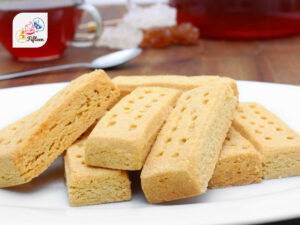
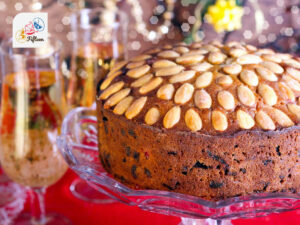
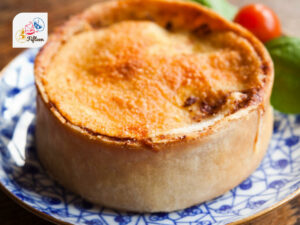
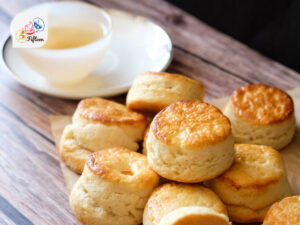
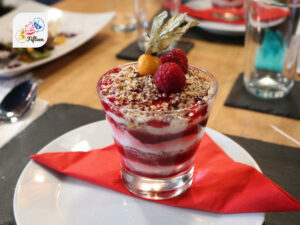
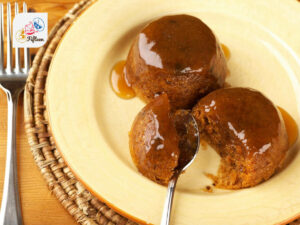
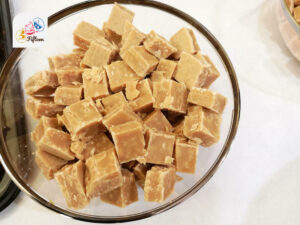
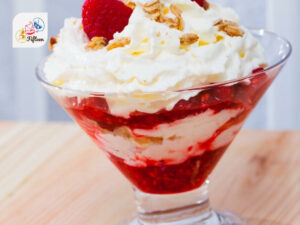
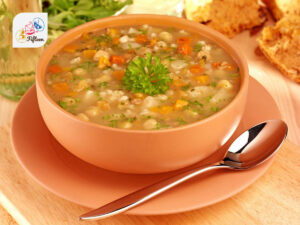
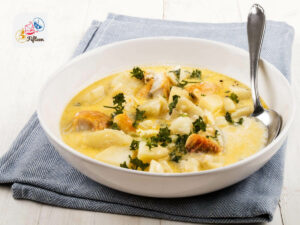
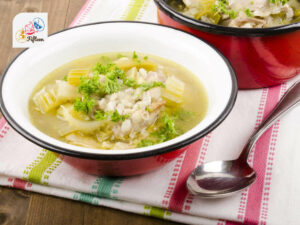
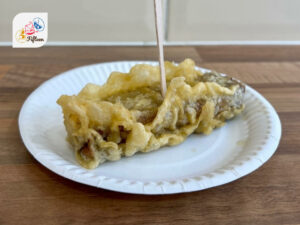
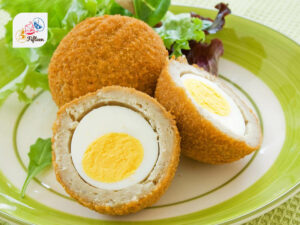
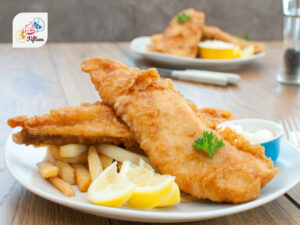
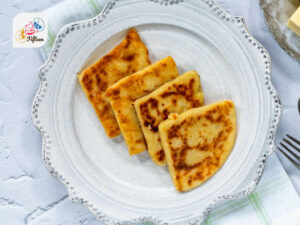
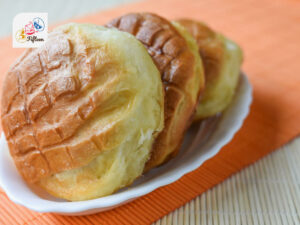
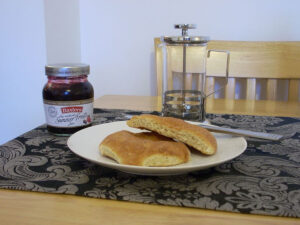
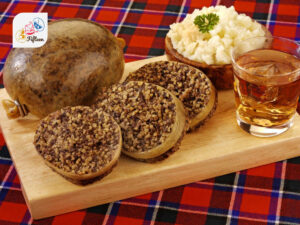
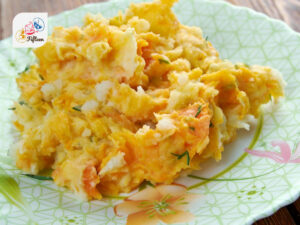
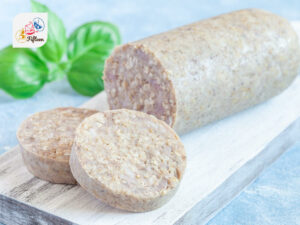
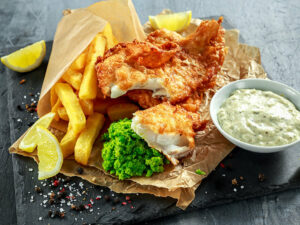
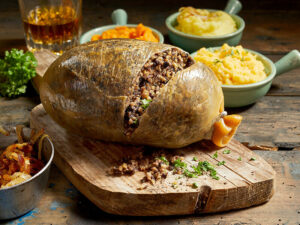
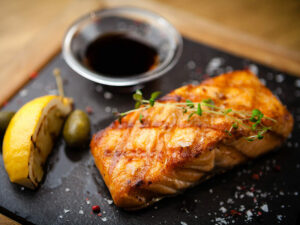
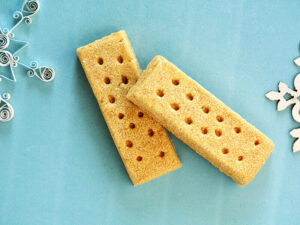
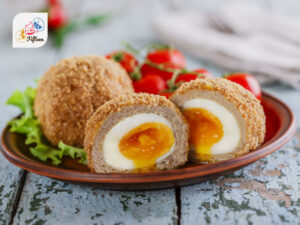
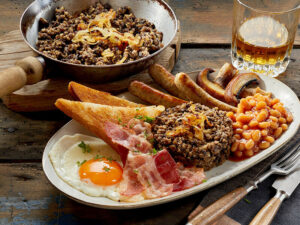
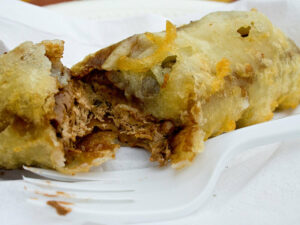
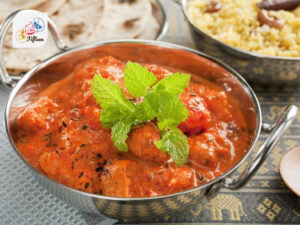
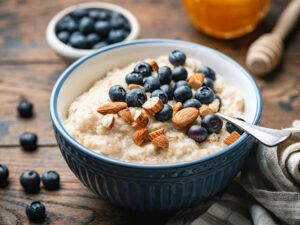
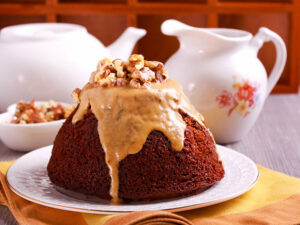
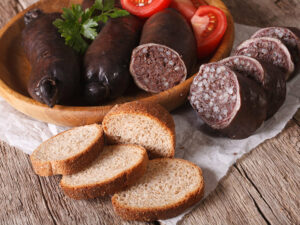
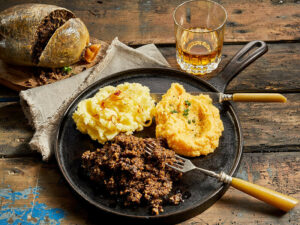
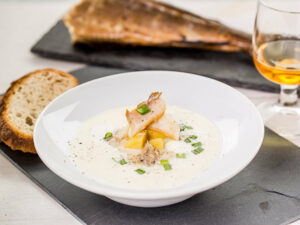
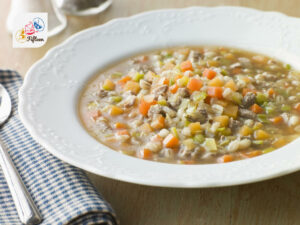
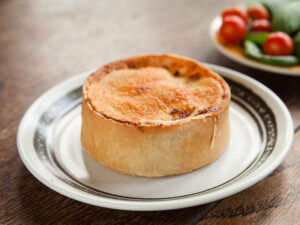
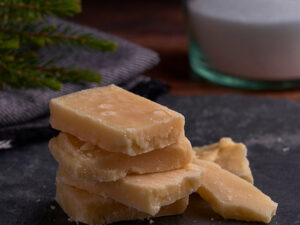
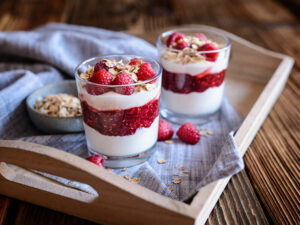
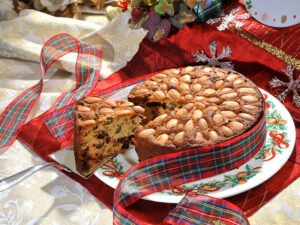
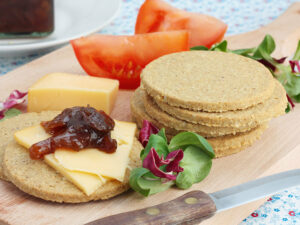
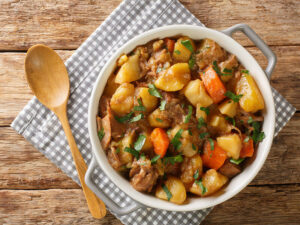
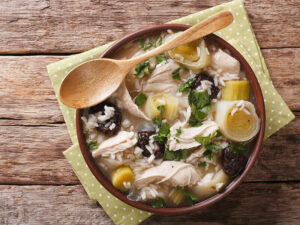
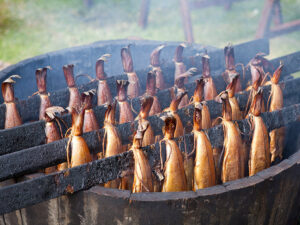
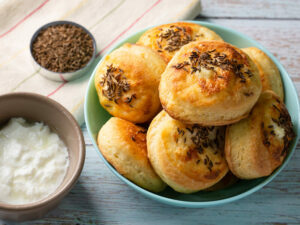
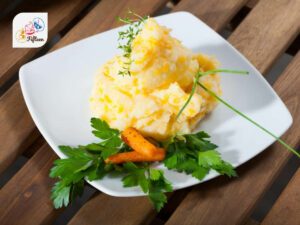
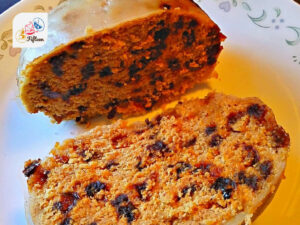
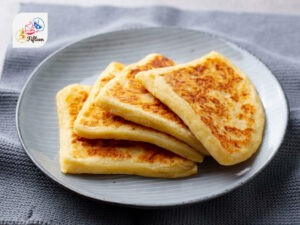
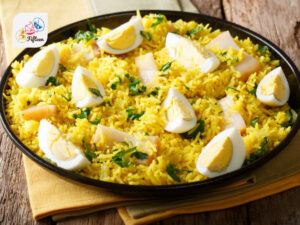
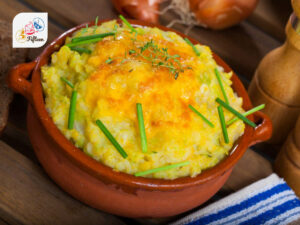

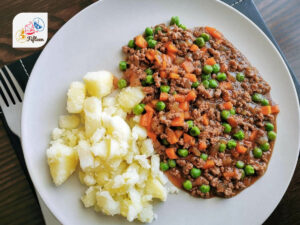
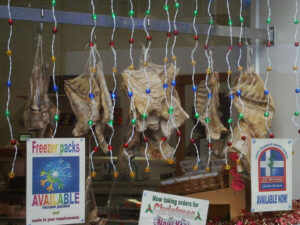
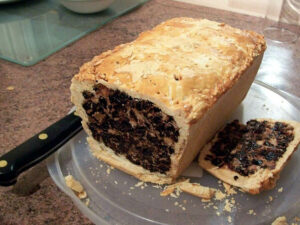
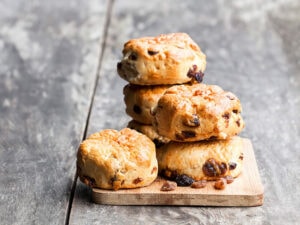
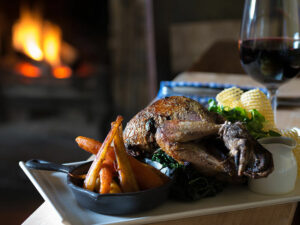
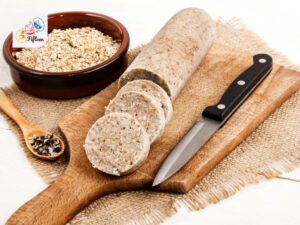
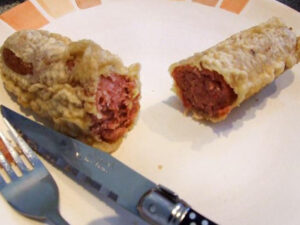
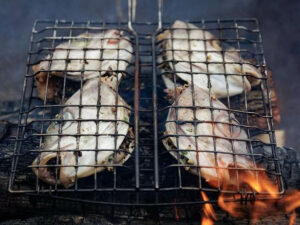
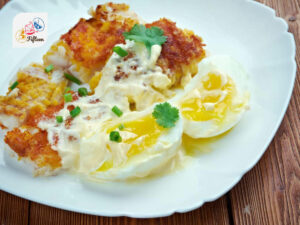
Jamie Scott
Editor in Chief, Senior Content Writer
Expertise
Home Cooking, Meal Planning, Recipe Development, Baking and Pastry, Food Editor, Cooking-video Maker, Western Food Evaluation Expert
Education
Le Cordon Bleu College of Culinary Arts
Local Community College, New York, NY
Jamie Scott is a skilled culinary expert and content creator specializing in Western cuisine. With over 15 years in the culinary field and formal training from Le Cordon Bleu, Paris, Jamie deeply understands how to blend nutrition with delicious flavors. His passion for cooking matches his commitment to making healthy eating accessible and enjoyable.
On Fifteen.net, Jamie brings a fresh perspective to classic dishes and beverages, offering readers insightful recipes, cooking tips, and a fresh view on meal planning that emphasizes taste, health, and simplicity.